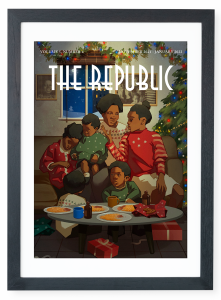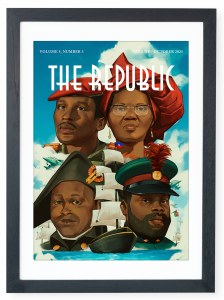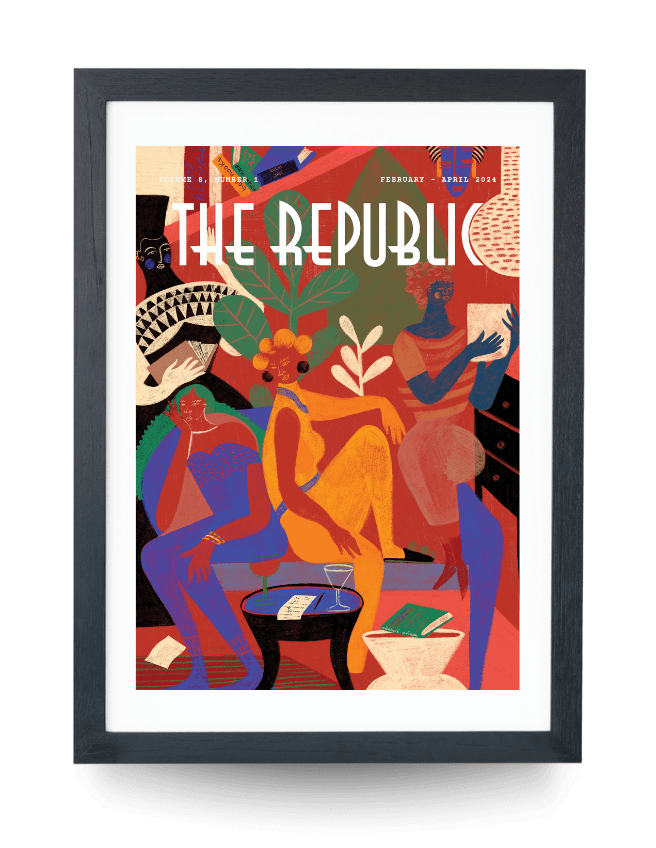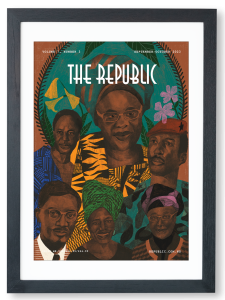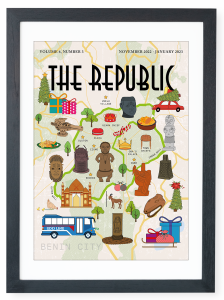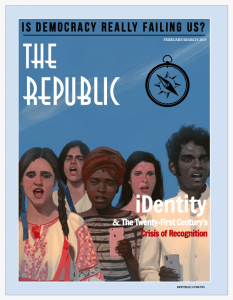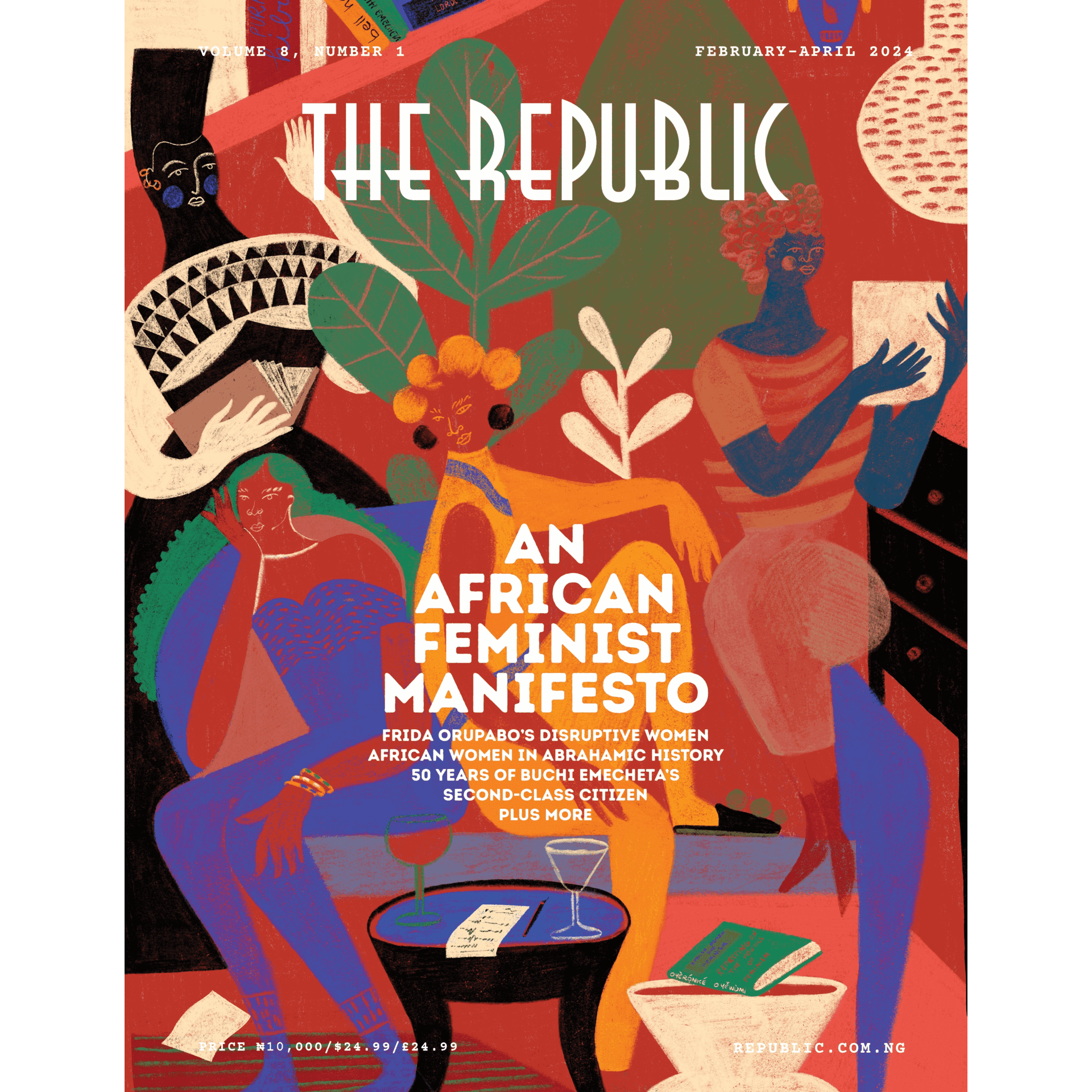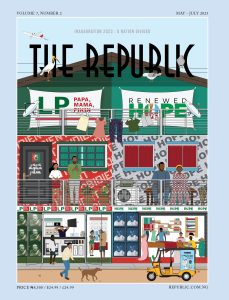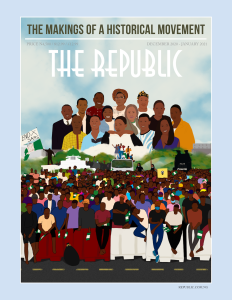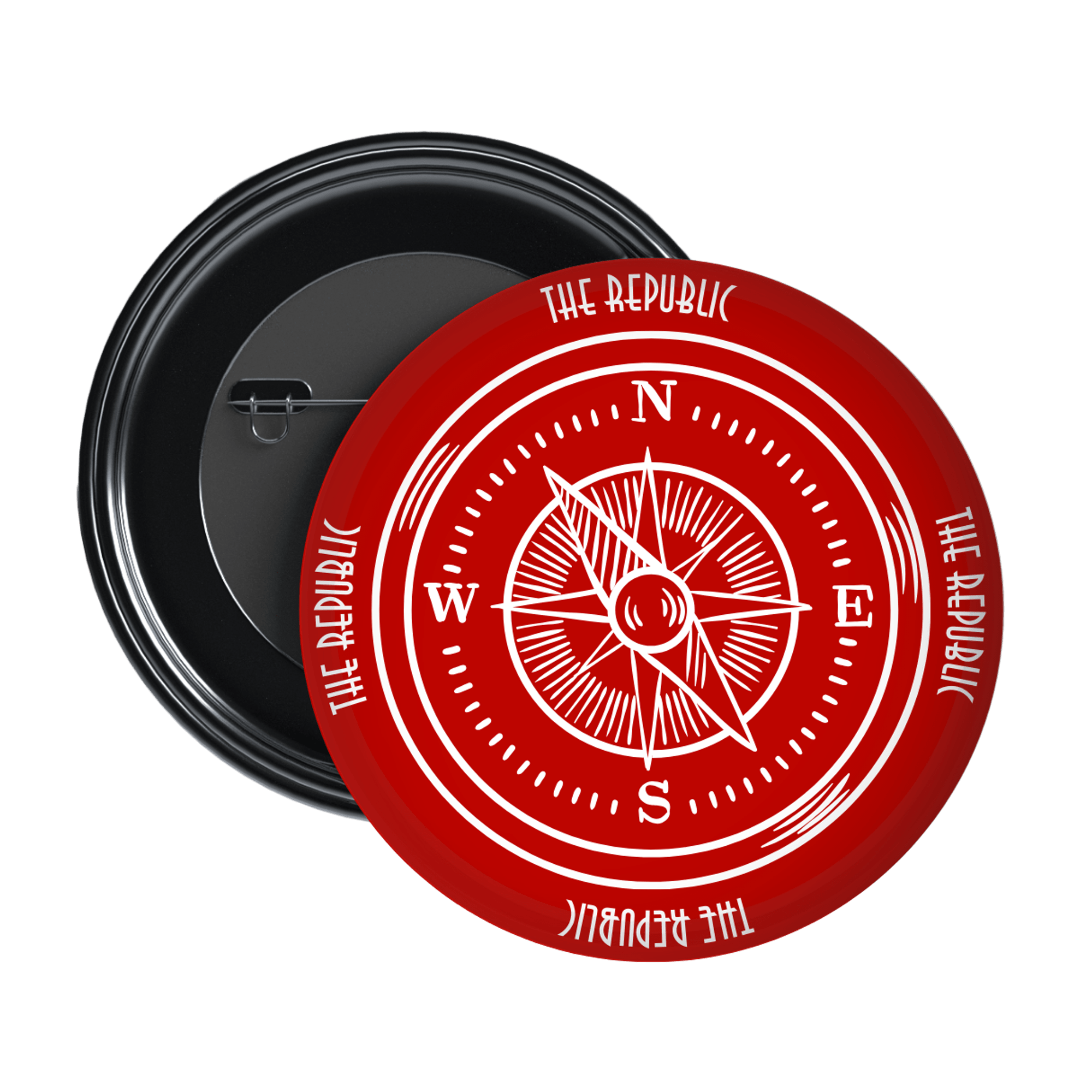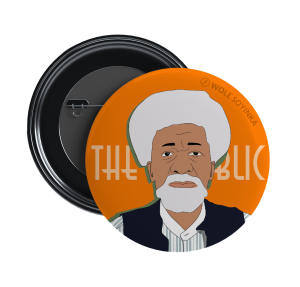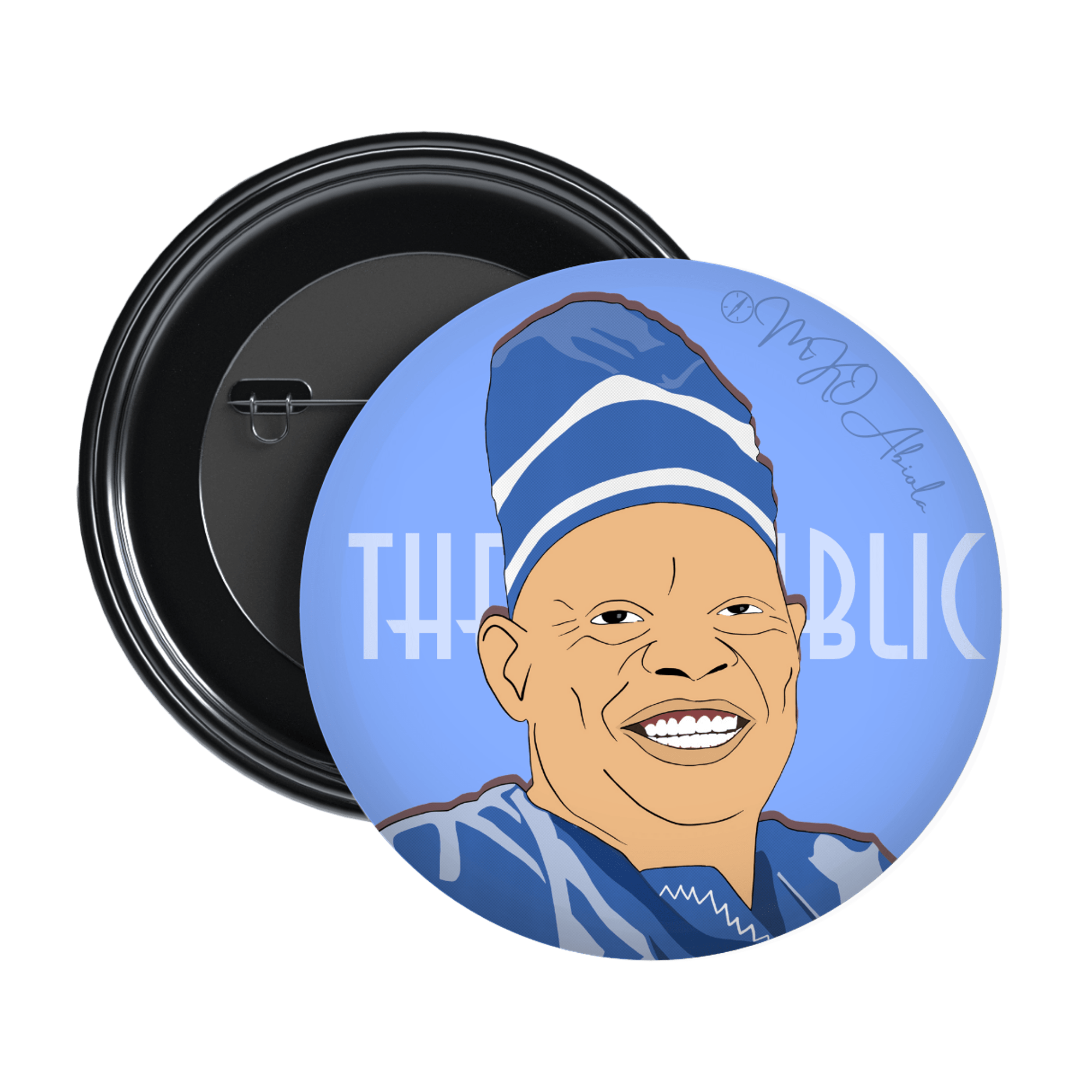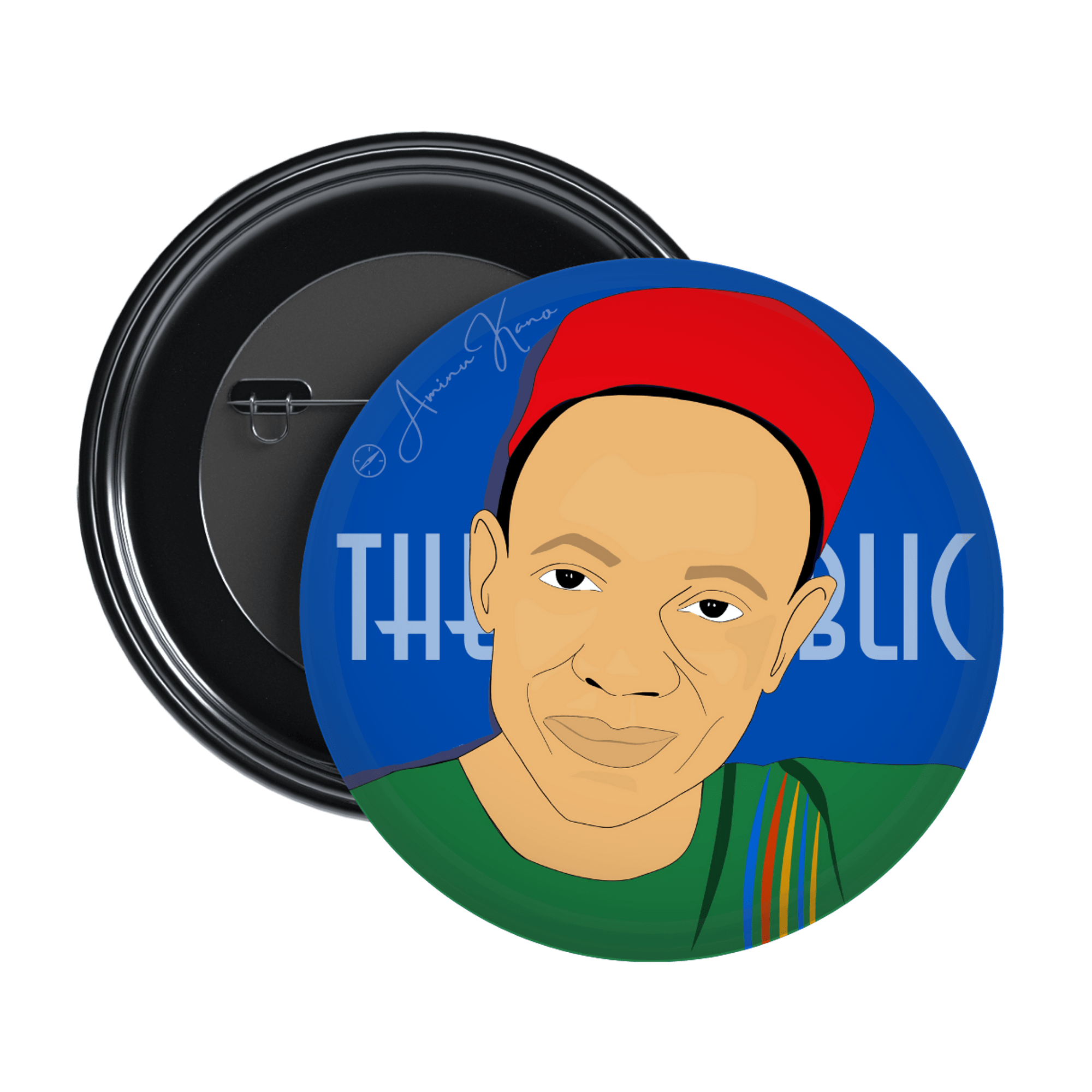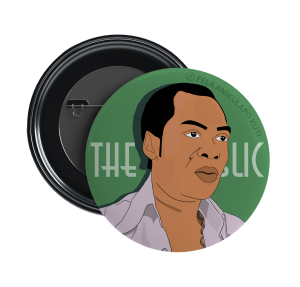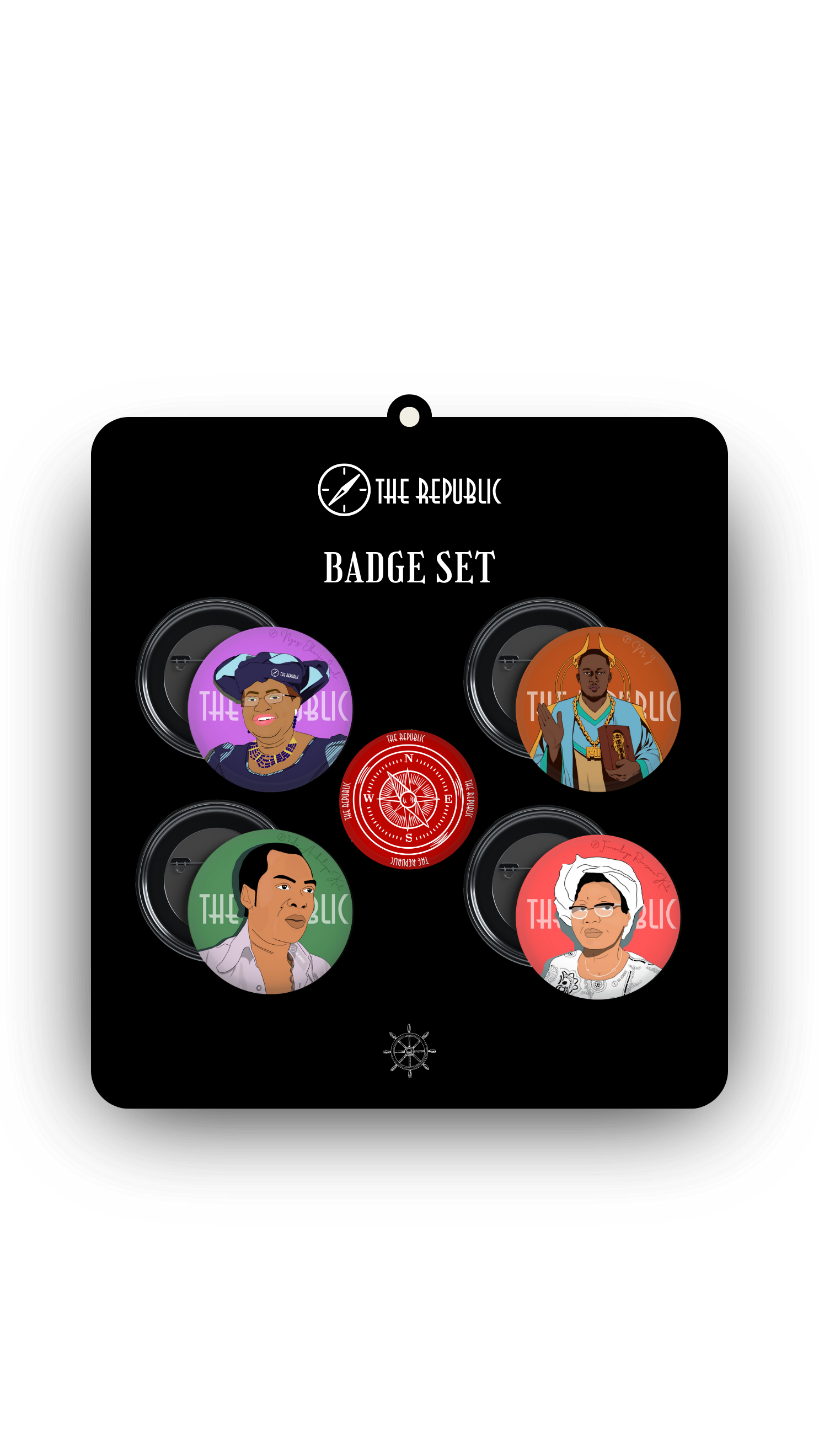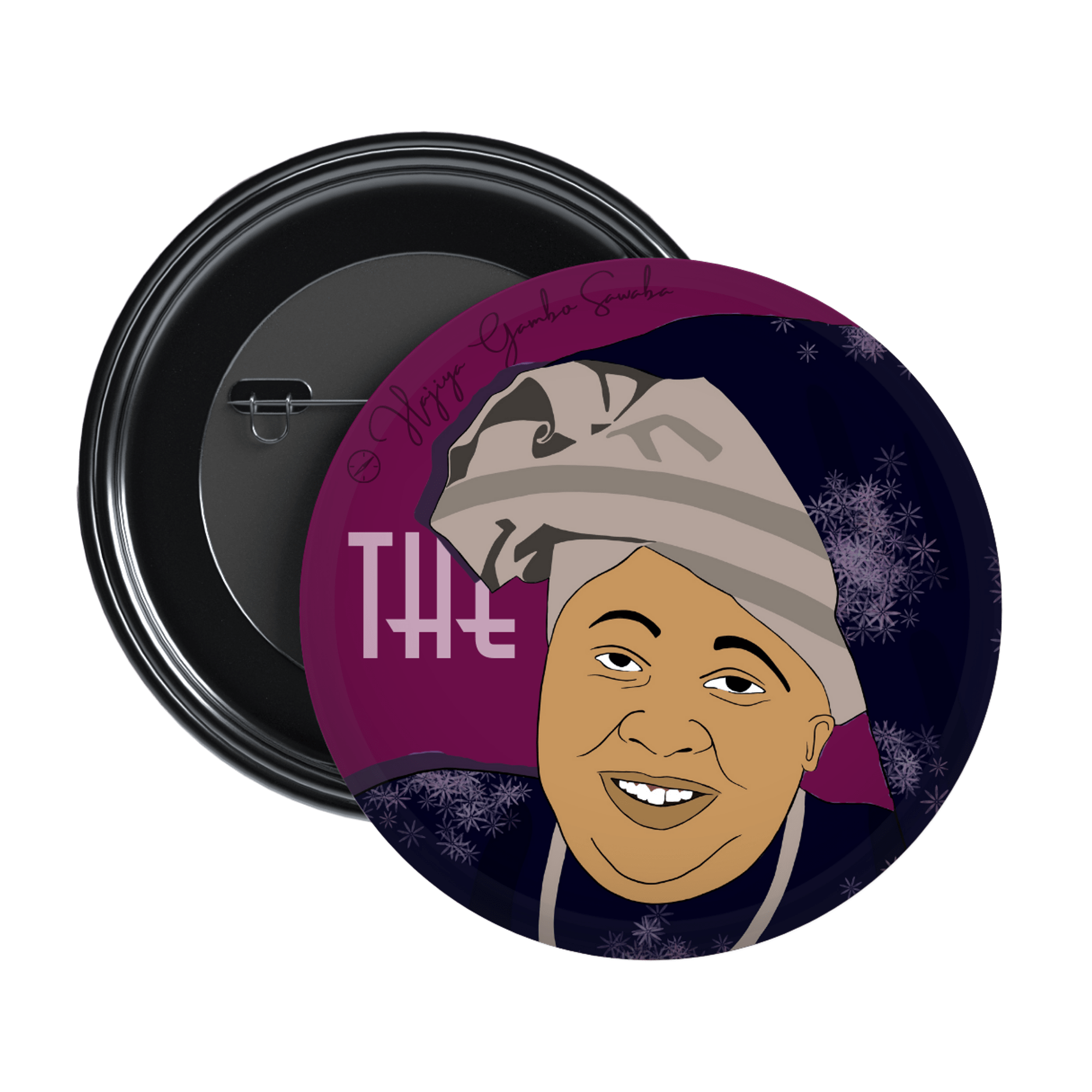THE MINISTRY OF ARTS / PHOTO DEPT.
The Disruptive Potential of Frida Orupabo’s Metamorphic Women
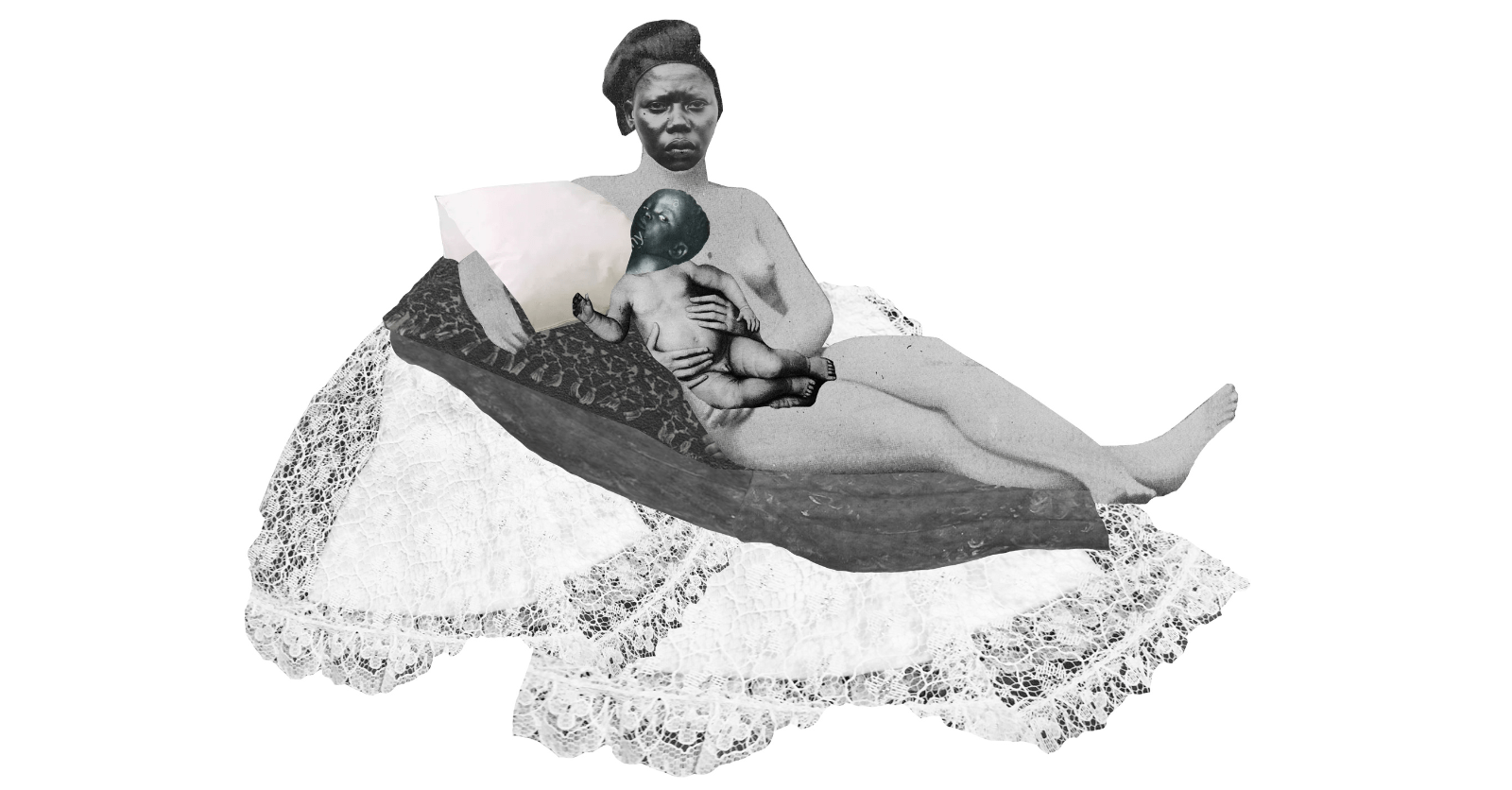
Photography courtesy of Frida Orupabo.
THE MINISTRY OF ARTS / PHOTO DEPT.
The Disruptive Potential of Frida Orupabo’s Metamorphic Women
Support for this essay came from the Open Society Foundations Ideas Workshop.
Here’s the thing about collages and their viscera, and the women who make them. The most faithful practitioners of the form are fixated on what it means to locate the grey area between reality and fabrication. They do this by means of disorder. An upright head here and then another offered like a dimorphic desirable twin. Or more drastic, a cocktail of bodies crudely refashioned into one, as if the possibilities for mixtures, for combinatorial pairings, for reconfigurations in nature are in fact limitless. To encounter a body in collage is to momentarily believe the human form is physically and even gesturally incapable of coming up against its own limitations. Frida Orupabo’s collages do this so well. They haunt the viewer with fond, familiar and unexpected shapes. Together, the forms they make are metamorphic. And ranked for what unmeasured emotion an image can evoke in its viewer, they disorient. You may resist all or most of Orupabo’s propositions.
WILD WOMEN
Seeing the female form through the Norwegian-Nigerian artist’s eyes can be jarring. A stack of black wings simply attached to a human face is offered as the fully realized body of a woman, held together with paper pins or something close. The gaze of this biform is direct, as in ‘Ehen?’ or ‘What are you looking at?’ Hardly are the girls and women that Orupabo sutures together alone by themselves with the distant, bored look of the girl in, say, La Mousmé. Whether or not they are alone though, but especially when they are alone, they look like they are waiting or steadying themselves. The air around them is often premonitory. Parts of the girl in ‘Sandwoman’ from the body of work, Things I saw at night, have evolved as if by natural selection toward superhuman, superhero-level musculature. They, Orupabo’s women, are crepuscular creatures. Their newforms realized or wrested from doing time in a world insistent on and dismissive of their private and public dystopias. In what might be her most circulated image, the aged hands of a woman—we identify in error or through social conditioning that she is a woman—hold the photograph of a young boy like a secret. The hands are veined, bejewelled, and storied.
On Instagram where I first found Orupabo who works from Oslo, she treats the photo dump as a digital lab. If the dump—with its treatment of the photographic accrual on our phones as some kind of source material from which we can pick and choose events and experiences for self-curation—is a feminine artform, Orupabo is one of its most surreal practitioners.
The artist’s use of Instagram as workspace makes a statement about the iconicity of any one image, that amounts to what might be considered a restoration of ‘the primitive status of images’. My reaction to finding my first Orupabo piece on Instagram was very much like a religious conversion. The piece, from the body of work Medicine for a Nightmare, showed a young, bare-breasted woman with scarification and a tag around her neck. She shields her vagina with one hand and holds a cigarette in another. She is kneeling. There is no sign of ecstasy on her face. When I saw it on my feed, I opened a burner account possessed by this image and once I found the language, shared it with an excerpt of Natalie Diaz’s poem, ‘These Hands, If Not Gods’:
Isn’t this what God felt when he pressed
together
the first Beloved: Everything.
Fever. Vapor. Atman. Pulsus. Finally,
a sin worth hurting for. Finally, a sweet, a
You are mine.
We know in the Sontag way, how much authority the algorithm wields in the framing of reality, especially in determining our relationship with the Black woman’s body. Even if the scope of that authority is hard to track. These apps are, after all, emergent phenomena with constantly changing features. But Orupabo’s very secular repurposing of the image produced for consumption and perception management subverts without trying. So, what if in our insistence on being photographed, we are making substitutions: less real and more curations of the self? The artist’s response to our much-recorded and much-photographed selves is to show the form of bodies as inexhaustibly strange and unknowable. Open to reconfiguration. A classic Instagram dump contains a complex signal of information: odd crops and zoom-ins, some overshare, intimations, all gesturing toward meaning making. It is not always clear which is an extension of which, even if Orupabo began to make her art online before she was included in her first gallery show. But, to go from her Instagram page to photographic representations of her collages from gallery shows, is to experience a zany immersion into the feed, into the ebb and flow of images and information.

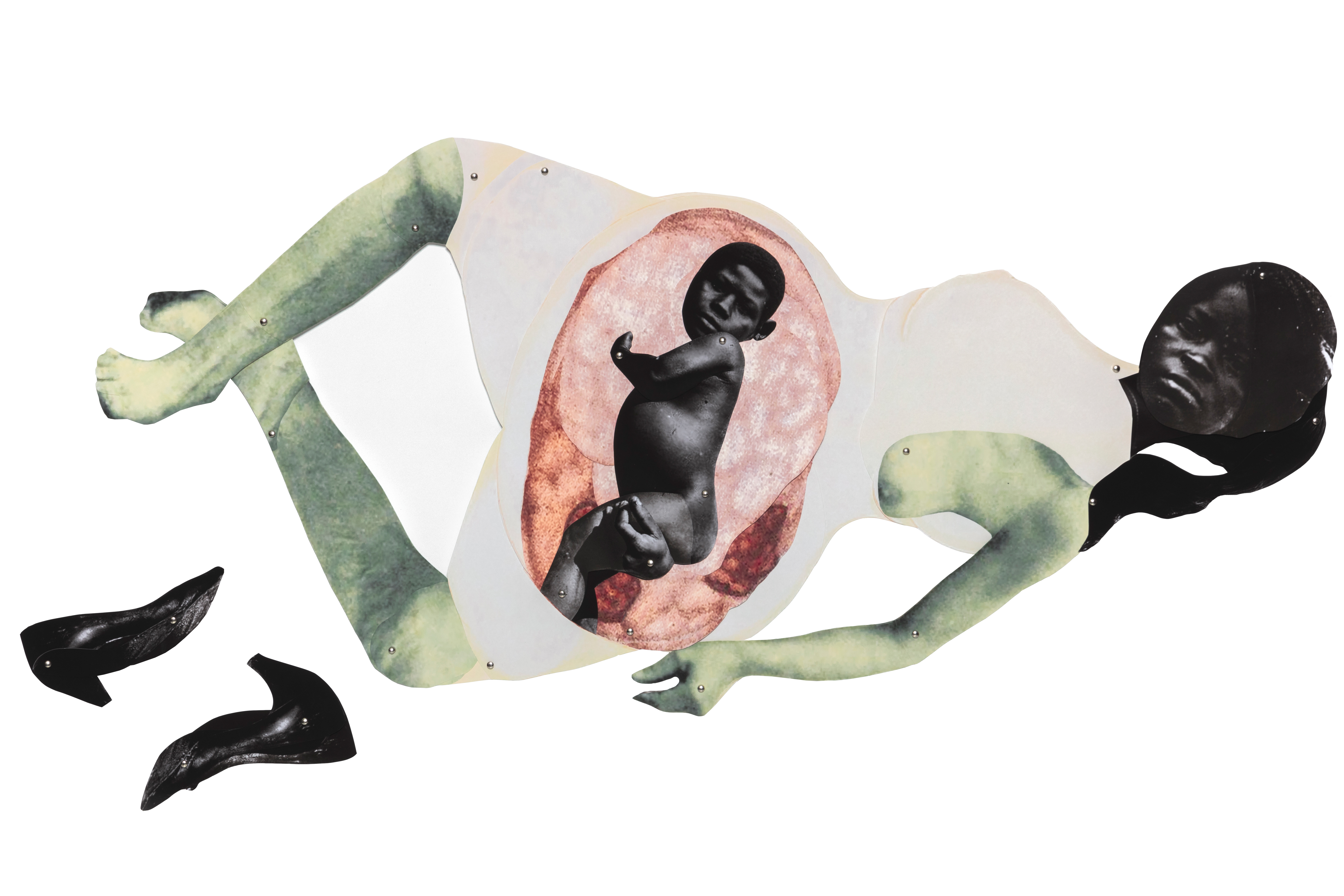

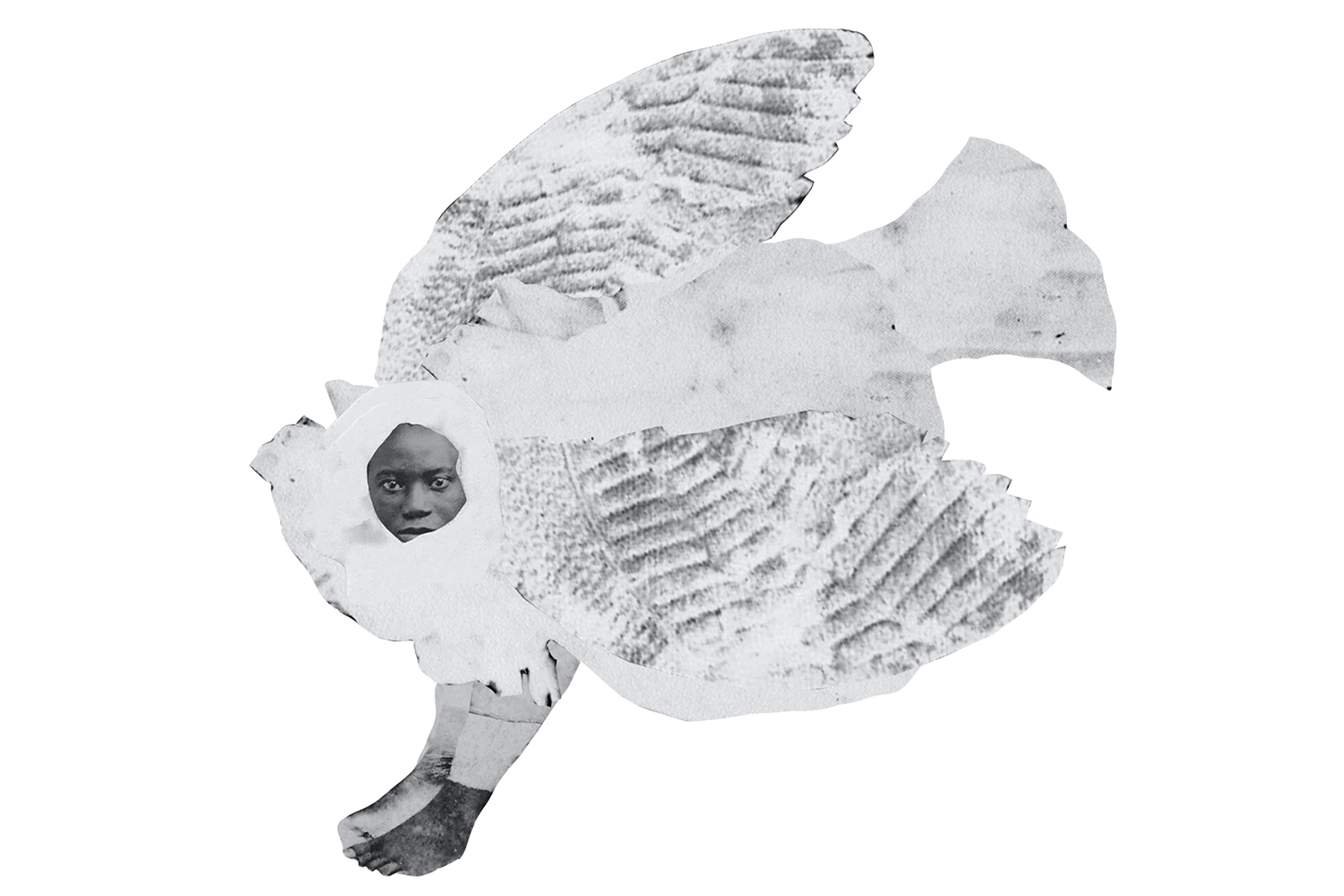

A TRANSGRESSIVE OTHER BODY
Made mostly from an excavation of photographs recombined to form a whole, Orupabo’s collages fix the gaze, land somewhere between archetype and stereotype, but remain provisional. They suggest. If what the Sri Lankan Canadian novelist and poet, Michael Ondaatje, notes—that a good archaeologist can read a bucket of soil as if it were a complex historical novel—is true, then what a collagist does is close. A collage accretes a form and depth that equates history. It contains information: some kind of data about the monument and the history of the material. Or about the history of the artist who brings the material together.
What, for instance, does eco-depression have to do with Orupabo’s work? What is the allure of the collage to the artist? What counterpoints exist when we refuse conventional form so that the subject might dictate its urgencies, offer perspectives that require new language and new positions? What exists on the conceptual plane for Orupabo that so compels or disturbs us when we look at collages like hers? How have they become doorways through which we re-enter fractured memory, contested history, and even the war zone?
To look at any of the pieces in Orupabo’s ‘We Sleep to Wake’ published in The Paris Review Issue 239, Spring 2022, and to have grown up in a war-torn or crisis-prone place is to understand inhabitation differently. The spatial, geographical, or psychosomatic experience of fear. How it might rework the skin as an articulating surface. A way to mark the schema of some societal malaise. A way to manage public nostalgias and griefs. How the bodily form contains information about its experienced or inherited history. The specific deliriums felt in the body from being surrounded by and growing up in zones of biohazards and ecological ruin.
It was Pablo Picasso and George Braque, according to art historians as noted in the magazine, Widewalls, who first envisioned the collage as statement making. But it is in Black artists like Wangechi Mutu, Njideka Akunyili Crosby, Kara Walker and Orupabo, and their treatment of the form, that the collage realizes its potential for statement making. In their approach, the collage maker gives the body recovered from the mines of history a second heart. A transgressive other body. Especially in the present moment as many countries re-enter the era of anarchy. The collage as a capacious, complex and contemporary medium for keeping track of what gets elided from the historical record comes into focus.
shop the republic
NATURAL STATES
Beyond the collage, in literature, the subject of the body fashioned or formed to replicate or resist or run afoul of the interior, felt or conditioned idea of what the female self should look like, abounds. As a reader, my first compelling encounter with the body of a woman in African fiction, Rabeka’s in the Pacesetter classic For Mbatha and Rabeka (1980), is male-centric of course. A woman written by a man, David G. Maillu, Rabeka is performing a ritual of maintenance or self-care to go on a date when we meet her. She loves it, she loves it not. The author sits her on a stool and shows her to the reader shaving her pubic hair in a room. I log this image and carry it around for years in the unsettled archive of my mind right next to the images of fictional women I borrow selves from: Adaku in Buchi Emecheta’s The Joys of Motherhood (1979). Esi Sekyi in Ama Ata Aidoo’s Changes (1991). Amaka in Chimamanda Ngozi Adichie’s Purple Hibiscus (2003). Enitan in Sefi Atta’s Everything Good Will Come (2005). Patti, Rosa and Christine in Doreen Biangana’s Tropical Fish (2005). All the girls in Flora Nwapa’s Women Are Different (1986), but Rose especially. Add to this catalogue of borrowed girlness/womanness, Ogbanje from Gracy Nma Osifo’s Dizzy Angel (1985). Bad women. Soft women. Sad women. Self-actualizing women. And then, there are the fictional fluid bodies in novels from this decade and the last, unrelenting in their inquisitions into identity, and presentations of the singular self as iconoclastic.
The catalogue distorts at Okot p’Bitek’s Song of Lawino where the African female body is rendered at times as a post-colonial collage, confused and image-influenced by the West. She is una bestia or entropic. The writer, a man, suggests that the African woman is more real or beautiful or true to herself in her natural state. In a way that now makes me think of the poet Charles Baudelaire saying, ‘I have always been astonished that women are allowed to enter churches. What can they possibly have with God?’ When has the natural state ever been form enough?
shop the republic
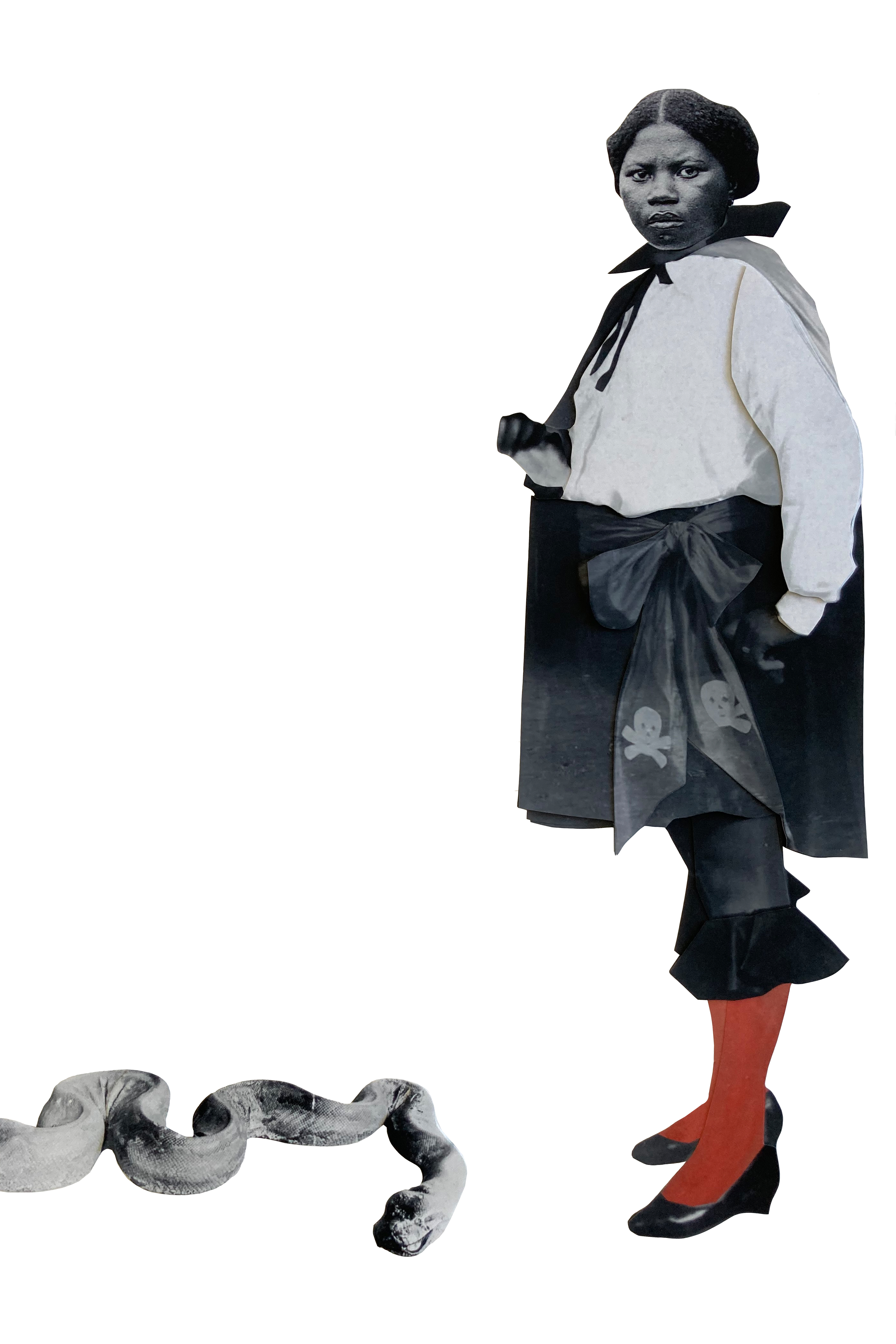
IS THIS YOUR WOMAN BODY?
Seen through a prepubescent Nigerian lens, the nineties will produce again and again in film, renditions of the female form. In the mulch of that decade, the body is present beyond convention. Mermaid bodies. Women morphing into cats. Older women morphing into younger women and back again. Most of these problematic, but bodies nonetheless that educated my own body on form. How to be in a room. How to want or deny the self of want. How to manage or mismanage desire. How to make the body a cruciform among the holy if the object of desire was a girl you let invite you to church even if you had lost your faith. In the cataloguing of selves, we understand intimately, the provisional nature of bodies. What the dysmorphic body knows, and the dysphoric body gets. We are learners.
Nowhere is the provisional state of bodies more apparent than within the theatre of modern romance. On a dating app, where I engineer a form of the self for selection. Good and ergonomic like a Bauhaus product. Made by easy-to-follow steps: five questions, six pictures, and you get love or great sex at the very least. Yet, despite this self, vetted and rigorously presented, some guy still let me know how being an African woman was a great thing because there was something so pure and natural about us. How good the African woman looks bent over working the earth, he said. And I thought, Ha! Clearly, parts of myself had not been collaged properly. The form had not held. How did we get here?
What combinatorial parts of myself had I miscommunicated to this person? Among sections of the aspirational class and the working class, it’s a sin to look hungry, and sacrilegious to do nothing about it as a woman. For girls who want to grow drug-induced bodies, there are unvetted, over-the-counter medications for that and testimonies of overnight Beyoncé bodies. There are routes to affirming womanness, to short-circuit the male gaze by artful subterfuge, that I might have taken. Instead of facing the gaze unfazed or rising above it. Any route taken would invariably make you an Oshun or Venus or phoenix or, simply, a feminist.
A drunk boy sang all night once, outside the room I shared with friends on campus, besotted by the size of a roommate’s arse. ‘You’re just a small pant,’ he said to me after my soapbox lecture on sexism. Another boy whose friend I was dating in school made an observation no one asked him for. ‘Your two breasts would fit into one hand and there’ll be space to hold more.’ Ha, I thought, boys are funny. ‘Is this the body you plan to have for the rest of your life? Is this your woman body?’ Another boy asked me once with genuine surprise. I was in my twenties and looked like a teenager. What Nigerians now call a civilian babe. Somewhere between a baddie and an amotekun babe, but far right of the spectrum. Self-hating and feeding off his curiosity, I let the question liberally chew at my insides: How many micro-formulations of selves did I need to add up to a whole self? How does a person compound a self? Like clockwork, the internet churns out videos of women transformed or transforming. Pictures and videos of women pre and post-gender transition or gender-affirming procedures. And who can forget Bobrisky’s question to whom it may concern, ‘Can I be snatched more?’ By my thirties, I had put together a functional self, taken that at some point to a dating app, and come up against a good old racist.
shop the republic
REALNESS
‘What a strange phenomenon form is,’ notes the painter Peter Doig in conversation with Chris Ofili for Bomb Magazine in 2007. Here, they are discussing an artist’s fidelity to true and remembered shapes. Orupabo herself has a show titled ‘I have seen a million pictures of my face and still I have no idea’ that meets Doig’s statement as a kind of testament. A way to prove that the body in nature is expansive and resistant to dogma.
We are trained to treat the form of bodies as sacrosanct, genealogical fact, and therefore divine. God insists that the body must be returned untouched. Uncompromised by our fascinations with ourselves. It is not clear where in colonial or pre-colonial history we adopted notions of the soul and the body as merged matter, but we are convinced of this. Here’s a real question I found online while working on this essay: ‘What would happen to the soul as the form of the body, under massive changes to the body?’ To treat an inquiry like this as mischievous or meant to be rationally met with dismissal is understandable. Even if there are wider or narrower contexts from which a person might ask this.
Orupabo’s response to the state of the corporeal body as malleable is authoritative. It is this treatment of bodies shown to be endlessly mutating as if evolution were a drastic real-time occurrence observable with or without the frames of Western science and its methodologies. This approach makes her an expert on the body archive and what might amount to true form or realness. If history and by extension the historian’s job is to emphasize men who ‘magnify the concept of man,’ Orupabo’s job as collagist and keeper of the body archive is to alter this concept so far beyond what it signifies. The resulting monument no less beautiful or commanding.
We go back and forth on what is normative. Which may explain the fascination with the recent Spring/Summer 2024 Artisanal show by John Galliano for the French luxury fashion house, Maison Margiela. Lucent doll-like faces on surreal bodies given new fluidities as if they were extra-terrestrial and coming to us from some future frontier. Subsuming, as the mainstream tends to do, conversations about more compelling body forms and narratives that have been with us: think lip plates and neck elongations. Unfortunately, breast flattening and female genital mutilation fall into the broad group. Still, cultures that have historically approached the body as a provisional canvas tell us something about what the female body might look like at any point in history. What potentials may exist for aestheticizing or affirming or telling the truth about the body. The altered body may be deviant in this contemporary moment, Orupabo shows, but it is autobiographical⎈




